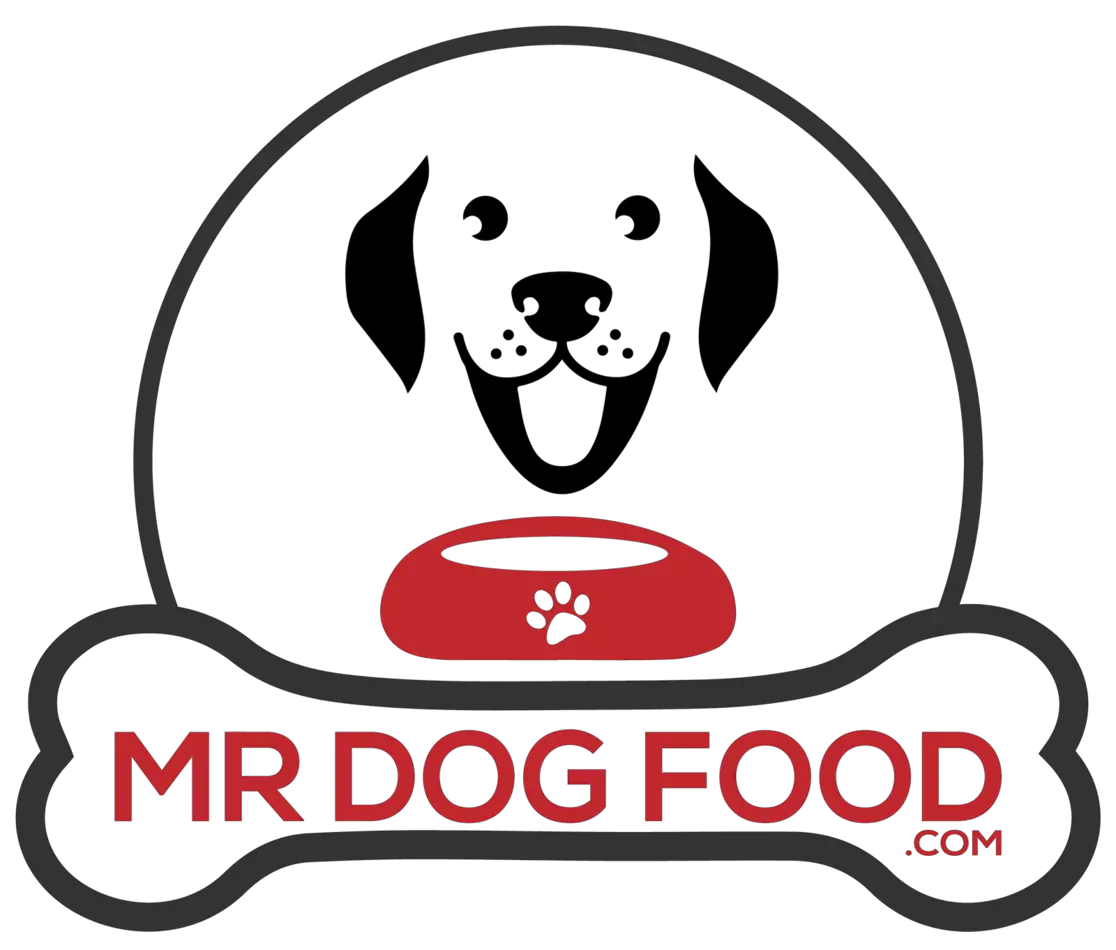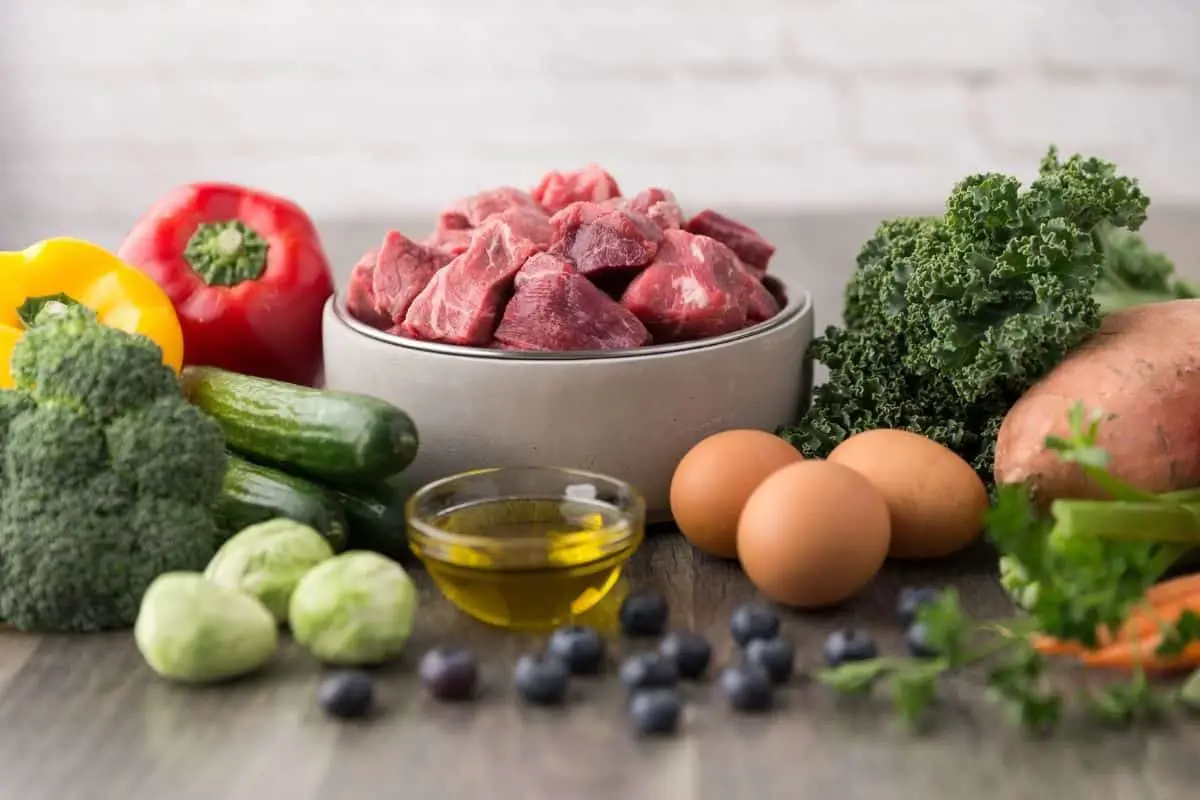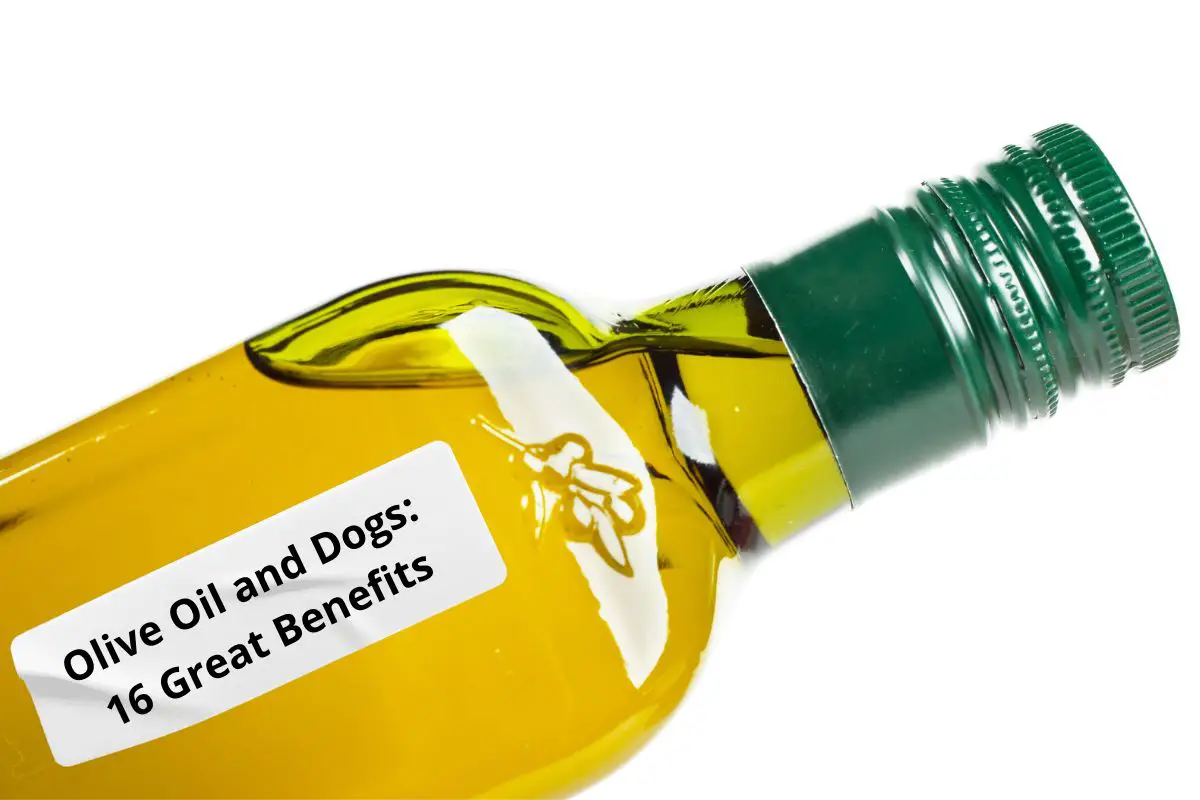This post contains affiliate links.
Many questions surround what a dog can and cannot eat outside of its regular diet. You likely already know that onions, chocolate, and grapes are a no-go for dogs, as they are literal poison to them, but what about the vast array of other types of foods? What can dogs eat, and how much?
“Real food” that dogs can eat include sweet potatoes, hamburgers, and blueberries. The Labrador Retriever can enjoy a bit of cooked egg (without oil, butter, or spices) daily. Siberian Huskies can eat up one tablespoon of peanut butter. Small breeds like Chihuahuas can have ¼ strip of bacon.
Today, we’ll explore more types of food that you can confidently share with your dog. We’ll also talk more about how breed size matters when feeding your dog real food! If you want to learn more about these topics, read on.
Table of Contents
What Real Foods Can Dogs Eat?
Dogs are omnivores like humans, but unlike humans, dogs process food a bit differently and cannot handle certain things that humans take for granted.
As we mentioned above, chocolate, grapes, and onions are poisonous to dogs, but this list also extends to avocado, macadamia nuts, and salt. If you want a fuller range of stuff dogs shouldn’t eat, we recommend clicking here.
About that last part, that’s a big reason why vets will tell you not to share your dinner with your dog. People love salt, but unfortunately, it’s bad for dogs since they cannot handle it nearly as well as humans. However, don’t feel too bad! Dogs largely taste through smell, and so what they can eat is not some bland, depressing concoction to your dog.
But without further ado, let’s talk about what exactly a dog can eat, and how much “real” food should you be giving your dog on a weekly or daily basis?
Sweet Potato
Sweet potato is a staple food that you can give to dogs as it is both nutritious and delicious. It contains fiber to support a healthy digestive system and essential vitamins such as C, A, and B6.
If you read many dog food ingredients, you’ll notice that sweet potato is a very common ingredient for these reasons. But dogs love the taste of sweet potatoes in and of themselves, and so giving them the real thing can work as a reward or even an addition to your dog’s food!
But how much sweet potato can you give your dog?
Medium to large-sized dogs such as Golden Retrievers and German Shepherds can enjoy up to 1 to 2 ounces (28.34 to 56.7 grams) of sweet potato a day, while small toy breeds like Malteses and Toy Poodles can enjoy up to one to three teaspoons.
And while this may be obvious for many, don’t forget to cook the sweet potato before giving it to your dog. Not only is raw sweet potato not enjoyable to eat, but it contains a decent amount of solanine, which causes digestive upset in dogs.
Peanut Butter
All-natural peanut butter that doesn’t contain loads of sugar is excellent for dogs. What you’ll want to look for on the ingredients is ONLY peanuts and avoid peanut butter that contains xylitol, as that is toxic for dogs.
Minimal salt in the ingredients can be okay because there isn’t enough of it to harm a dog in the moderate amounts you’ll give to them. Remember, peanut butter is extremely calorie and fat-dense, and dogs don’t need a lot of it at all – pretty much just a taste of it.
The ideal peanut butter would be something like NAKED Organic Peanut Butter, which is literally just peanuts that have been dry roasted, crushed, and thrown into a jar to make peanut butter. But how much peanut butter can you give a dog? As we stated above, they only need a tasting of it.
Medium to large dogs, such as the Siberian Husky, can enjoy up to one tablespoon of peanut butter a day. In contrast, small breeds such as the Pomeranian can enjoy a half or even slightly less of a tablespoon.
You can use peanut butter as a tasty reward for being a good boy/girl!
Hamburger
Not to be confused with the sandwich that contains the patty, mayo, cheese, bacon, etc. Plain hamburger is a great treat for dogs, and they have an easy time digesting it, as it is a form of minced meat. Plain is the keyword here; no salt and especially no garlic should be used to flavor up a hamburger patty that you’d cook for a dog.
If you plan on making your dog a patty when it’s hamburger night or it’s backyard grill party time, ensure you don’t get the dog’s patty and the people’s patties mixed up!
Also, the leaner, the better, but don’t beat yourself up over the standard 80/20. While 90/10 is best, most people have 80/20 in the fridge, and so it simply isn’t realistic to expect dogs will always get an ultra-lean hamburger. And the amount of it you’d feed isn’t enough fat to cause harm. Simply strain the beef and pat out the excess fat with a paper towel.
However, if you are going to make a hamburger a daily part of your dog’s meals rather than using it as a treat, definitely go with 90/10 lean ground beef since most dogs are sensitive to fat when eaten in excess.
As a treat, you can give medium to large breeds such as the Border Collie up to four ounces of cooked, plain ground beef, while small breeds such as the dachshund can enjoy up to 1.5 to 2 ounces (42.52 to 56.7 grams).
Blueberries
You can give dogs blueberries daily to help prevent conditions such as UTI. You can simply sprinkle it over your dog’s regular food for a tasty and healthy addition. But how many blueberries can a dog handle a day?

You can give medium to large dog breeds such as the Australian Shepard up to 10 blueberries a day, while small breeds such as the Bichon Frise should only have up to 5 a day.
Can You Give a Dog Bacon?
Bacon is the ultimate treat for dogs, and for a good reason: it is salty, fatty, crispy, and just so good! These are all qualities dogs go crazy for, and humans too can’t get enough of it, but can you share this delicious treat with your dog?
Technically, yes, but very sparingly.
The qualities that make bacon amazing are harmful to dogs in large enough amounts, and it shouldn’t necessarily be a daily reward treat and definitely not part of their daily meals. But some bacon here and there for being a sweet good boy/girl won’t harm a dog. The problem with bacon is that since it is so thin, owners might mistake going overboard with it.
How much bacon can a dog safely eat? Medium to large dog breeds such as the Labrador Retriever can enjoy 1 bacon strip, while small breeds, such as the Chihuahua or Chiweenie, can have up to ¼ of a strip. You can safely do this once a week. If your dog has a healthy diet and is getting enough exercise, safe amounts of bacon are akin to a healthy human enjoying a slice of cheesecake on the weekend.
However, keep in mind that some dogs have sensitive stomachs, which may be too much for these individual pups. We recommend starting with even smaller qualities, such as a half strip for a Labrador-sized dog and ⅛ for a Chihuahua size dog.
If you’d like to treat your dog often, we’d recommend bacon treats made specifically for dogs, such as Purina Beggin’ Strips as dog treats take out much of the bad stuff for dogs but leave just enough of it in to be a tasty, safe treat!
Conclusion
There are various real foods that dogs can safely enjoy, but if you are unsure what you can and can’t share with your dog, simply do a quick Google search. The top result will immediately tell you the answer. Some foods are more debatable, such as bacon, but nonetheless, we are all looking out for good boys/girls so they can live the best lives possible.
If you’d like more insight on this topic, we’ve linked a video below that showcases even more real food that dogs can safely eat:
Sources
- AKC: Can Dogs Eat Sweet Potatoes?
- AKC: Can Dogs Eat Peanut Butter?
- The Dog People: Can My Dog Eat Hamburger?
- Love to Know: Are Blueberries Safe for Dogs?
- Pet Place: Can Dogs Eat Bacon?
- Purina: Can Dogs Eat Eggs?
Mrdogfood.com is a participant in the Amazon Services LLC Associates Program, an affiliate advertising program designed to provide a means for sites to earn advertising fees by advertising and linking to Amazon.com. We also participate in other affiliate programs which compensate us for referring traffic.





